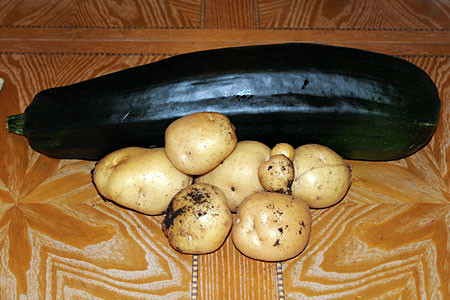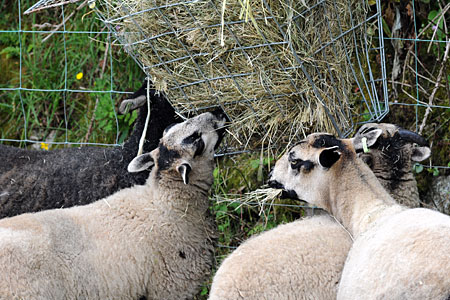Welcome to Relaxed Farming
- Alpacas
- Chickens
- Dairy Goats
- Ducks
- Geese
- Pigs
- Pygmy Goats
- Quail
- Rabbits
- Sheep
- Turkeys
- Polytunnel
- Photo Stories
- Video Stories
- Food
- Smallholding Map
- 2013
- 2014


- August
- September
- October
- November
- December
- January
- February
- March
- April
- May
- June
- July
- August


- 1
- 2
- 3
- 4
- 5
- 6
- 7
- 8
- 9
- 10
- 11
- 12
- 13
- 14
- 15
- 16
- 17
- 18
- 19
- 20
- 21
- 22
- 23
- 24
- 25
- 26
- 27
- 28
- 29
- 30
- 31
Monday, 14th July 2014
Our first marrow of the year, weighing in at a fabulous 3.8kg!!! A marrow is essentially an overgrown courgette and it is incredible how one day all you see are tiny courgettes on your plants and then the next you look under one of the leaves and a HUGE 40cm marrow is lying there. Courgettes/marrows grow very fast and are very well camouflaged amongst the massive leaves. However, if the plants are not watered daily they may become bitter and if they are watered from above the flowers may hold the water like a cup and the courgette will then rot. As with most crops at this time of year we have an abundance which needs to be stored or frequently used in order to make the most of them and not allow any to go to waste. Last year we made two gallons of soup with marrows, squash, carrots and onions (see 11th November). We hope to store a few of the larger marrows until the squash are ready and do the same again this year. The marrow in the picture was stuffed with onion, garlic, carrot, peas, asparagus and olive oil and then served up with roast potatoes and pork! It was delicious!!
In the second photo we have a sight usually seen in the winter: the sheep eating hay! Unfortunately our grass is still not growing that well at the moment and so the sheep decided they fancied a bit of the goat hay this morning. July is a funny month for grass as the weather is usually quite dry and so the grass can have a bit of a 'dormant' stage (little or no growth). The trouble is that June and a lot of May was also quite dry and whilst we had a fair bit of rain at the end of June and the grass did begin to grow again, another period of dry weather since has slowed things down. Out on the moor the sheep survive on quite poor amounts of grass but in our paddock our sheep are used to it being a bit lusher. They are eating well still but nibbling it right down which means with the current dry weather, it then take longer to grow back...
Another problem with having short grass is to do with the worms that like to live in the sheep's guts! The worms lay eggs which get passed out inside the poo and those eggs then hatch into larva (young worms). The larva however cannot always climb up really long grass and so are less likely to get eaten by the sheep. If the grass is short however, they are more likely to end up in the sheep's mouths and from there, swallowed down into the stomach. Here they will develop into adult worms, lay eggs and the cycle starts all over again!!!
So, despite having gone through the wettest winter ever on our smallholding, we now need rain!!!!

